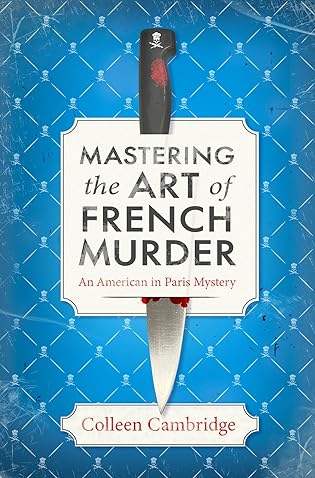 Mastering the Art of French Murder (An American In Paris, #1) by Colleen Cambridge
Mastering the Art of French Murder (An American In Paris, #1) by Colleen Cambridge Format: eARC
Source: supplied by publisher via NetGalley
Formats available: hardcover, paperback, ebook, audiobook
Genres: culinary mystery, foodie fiction, historical mystery, mystery
Series: American in Paris Mystery #1
Pages: 304
Published by Kensington on April 25, 2023
Purchasing Info: Author's Website, Publisher's Website, Amazon, Barnes & Noble, Kobo, Bookshop.org, Better World Books
Goodreads
Fans of Jacqueline Winspear, Marie Benedict, Nita Prose, and of course, Julia Child, will adore this magnifique new mystery set in Paris and starring Julia Child’s (fictional) best friend, confidante, and fellow American. From the acclaimed author of Murder at Mallowan Hall , this delightful new book provides a fresh perspective on the iconic chef’s years in post-WWII Paris.
“Enchanting…Cambridge captures Child’s distinct voice and energy so perfectly. Expect to leave this vacation hoping for a return trip.” – Publishers Weekly
As Paris rediscovers its joie de vivre, Tabitha Knight, recently arrived from Detroit for an extended stay with her French grandfather, is on her own journey of discovery. Paris isn’t just the City of Light; it’s the city of history, romance, stunning architecture . . . and food. Thanks to her neighbor and friend Julia Child, another ex-pat who’s fallen head over heels for Paris, Tabitha is learning how to cook for her Grandpère and Oncle Rafe.
Between tutoring Americans in French, visiting the market, and eagerly sampling the results of Julia’s studies at Le Cordon Bleu cooking school, Tabitha’s sojourn is proving thoroughly delightful. That is, until the cold December day they return to Julia’s building and learn that a body has been found in the cellar. Tabitha recognizes the victim as a woman she’d met only the night before, at a party given by Julia’s sister, Dort. The murder weapon found nearby is recognizable too—a knife from Julia’s kitchen.
Tabitha is eager to help the investigation, but is shocked when Inspector Merveille reveals that a note, in Tabitha’s handwriting, was found in the dead woman’s pocket. Is this murder a case of international intrigue, or something far more personal? From the shadows of the Tour Eiffel at midnight, to the tiny third-floor Child kitchen, to the grungy streets of Montmartre, Tabitha navigates through the city hoping to find the real killer before she or one of her friends ends up in prison . . . or worse.
“Part historical fiction, part mystery, Mastering the Art of French Murder is totally delectable entertainment.” – The Washington Post
“Certain to appeal to a broad readership, especially fans of Jacqueline Winspear, Rhys Bowen, and Cambridge’s own Phyllida Bright series.” –First Clue, STARRED REVIEW
My Review:
“Drama is very important in life: You have to come on with a bang. You never want to go out with a whimper. Everything can have drama if it’s done right. Even a pancake.” So said the real Julia Child, whose larger-than-life fictional persona has barged into the life of her neighbor in Paris, fellow expat Tabitha Knight, just a few months before a murder in Julia’s building bangs into both of their lives.
It’s the murder of a very recent guest in the apartment shared by Julia, her husband Paul Child, her sister Dorothy (Dort) McWilliams on the “Roo de Loo” as Julia called it. A murder committed with one of Julia’s distinctive chef’s knives, making Julia, at least initially, the prime suspect in this tragedy.
But Julia is not the amateur sleuth – she was too busy with what became her lifelong obsession, “Mastering the Art of French Cooking,” as evidenced by the title of her first cookbook.
The amateur sleuthing is left to Tabitha Knight, a former “Rosie the Riveter” living across the street with her elderly French grandfather and her honorary “oncle”, his equally elderly best friend (and probably lover).
Tabitha and Julia have already bonded over their shared infatuation with French food and French cooking – the difference being that Julia is already extremely capable at that art while Tabitha is lucky not to burn or otherwise ruin the meals she attempts to make for her elderly ‘messieurs’ and their two spoiled pets, Oscar Wilde the tiny papillon dog and Madame X the slinky cat.
But the murder isn’t merely a curiosity for either of the women. The victim died just after leaving a party in Julia’s apartment, a guest of Julia’s sister Dort, killed by one of Julia’s knives. Tabitha rode down in the elevator with the woman, and was the last to speak with her other than her killer.
The police, in the steely-eyed persona of Inspecteur Merveille, seem convinced that either Julia or Tabitha committed the foul deed. Or so it seems to Tabitha, who grew up on a steady reading diet of Nancy Drew and other mystery stories as well as her police detective father brought home. Julia is just certain – and Julia was always certain if she was anything at all – that Tabitha will be able to solve the murder ahead of the police – and pushes her into trying.
Not that it takes much arm twisting to get Tabitha on the case. A case that leads from one murder, to a second, and a third – and even a first before the one that dragged Tabitha and Julia into the mess. A mess that, surprising to everyone but the two old men yearning for Julia’s cooking rather than Tabitha’s, leads back to the war late war in which they all, in their own way, served.
And the colder war that has just begun.
Escape Rating A: First, and most important, this was an absolutely charming, utterly lovely read as well as a captivating mystery. The way that evokes post-World War II Paris, just as the lights came back on in the City of Light draws the reader and keeps them mesmerized every step of Tabitha’s way.
And I could hear Julia Child’s voice in my head in every single bit of her dialog. She was such an iconic figure in the 60s and 70s, and so ubiquitous in seemingly EVERY promo that PBS broadcast during those decades, that even though I never watched any of her programs I STILL heard her distinctive voice every single time she barged into a scene. The character as fictionalized sounded and behaved very much as at least her public persona did and swept the reader along in her wake.
But Julia was not the star of this show, no matter how often she seemed to hold center stage in any individual scene. That honor – even if she didn’t always see it as an honor – was reserved for Julia’s fictional friend and neighbor, Tabitha Knight.
And Tabitha turned out to be a terrific point-of-view character for this story. She’s impish, impulsive and intelligent, and can’t resist being the fool who rushes into a crime scene where police have barred the way and angels rightfully fear to tread.
As much as the blurbs for this book invoke Jacqueline Winspear and her Maisie Dobbs, the character that Tabitha reminds this reader of is Mabel Canning in her first outing, A Body on the Doorstep. Both Tabitha and Mabel’s stories are set just after the ending of a World War, although not the same war, at a point where their worlds are changing and new possibilities are opening up even as others close down. Both young women choose to uproot themselves from the familiar and chart a new course for their lives, and are still in the exploratory stage of that new life and new opportunities.
And both have a fortunate knack – one that often seems unfortunate as it occurs – of tripping over murder victims and being unable to resist poking their own noses into investigations that should be left to the police.
At the same time, Tabitha’s post-war Paris is a place that, if given the opportunity at the right time, It’s almost impossible not to imagine taking that opportunity and running with it to a new life in a storied city just as it is coming back into its own after the darkness of war.
The secondary characters introduced in this first book do an excellent job of drawing the reader into and filling out the corners or Tabitha’s Paris, from her charming, elderly messieurs, their equally idiosyncratic pets, the even more idiosyncratic members of the Child household, to the implacable, unreadable Inspecteur Étienne Merveille, who looks like he will become both a thorn in Tabitha’s side – and vice versa – in the books ahead.
If not, perhaps, something more.
 And then there’s Julia Child herself, much too boisterous to ever be considered merely a secondary character and certainly not a sidekick, who draws readers in with her true-to-life mannerism, her real, documented history working for the OSS in the war, and her larger-than-life presence on so many wonderful pages of this story.
And then there’s Julia Child herself, much too boisterous to ever be considered merely a secondary character and certainly not a sidekick, who draws readers in with her true-to-life mannerism, her real, documented history working for the OSS in the war, and her larger-than-life presence on so many wonderful pages of this story.
The alchemy of all of the above makes this reader so very glad that a second book in this An American in Paris series, A Murder Most French, will be coming out in April. I’m anticipating its arrival with nearly as much pleasure as Tabitha’s messieurs look forward to their next delicious repast from the kitchen of Madame Child.
It’s impossible to leave this story behind without one final word from that famous chef. Fortunately for the fictional Julia Child, this quote postdates her post-War years by a considerable margin. If this had been attributed to her at the time, Tabitha might have had considerably more difficulty convincing the Inspecteur that Julia was not guilty of the murder.
According to Julia Child, “The best way to execute French cooking is to get good and loaded, and whack the hell out of a chicken. Bon appétit.”

TLC tour schedule:
Monday, February 19th: @books_old_and_new
Tuesday, February 20th: @diveintoagoodbook
Tuesday, February 20th: @suethebookie
Wednesday, February 21st: @mrsj_readsbooks
Wednesday, February 21st: @dianas_books_cars_
Thursday, February 22nd: @abookwormwithwine
Thursday, February 22nd: @amys_book_addiction
Friday, February 23rd: @bookapotamus
Friday, February 23rd: @bookgirlbrown_reviews
Saturday, February 24th: @nissa_the.bookworm
Sunday, February 25th: @
Monday, February 26th: @donasbooks
Tuesday, February 27th: Reading Reality and @reading_reality
Wednesday, February 28th: @the.caffeinated.reader
Thursday, February 29th: @aneedleinmybookstack
Friday, March 1st: @oilycaffeinatedmama
Friday, March 1st: @whatkarinareads
Saturday, March 2nd: @cmtloveswineandbooks
Saturday, March 2nd: @ablueboxfullofbooks
Sunday, March 3rd: @lyon.brit.

 Always Remember (Ravenswood #3) by
Always Remember (Ravenswood #3) by  At the beginning of the
At the beginning of the  Escape Rating A-: I came into Always Remember with high hopes after a bit of disappointment with
Escape Rating A-: I came into Always Remember with high hopes after a bit of disappointment with 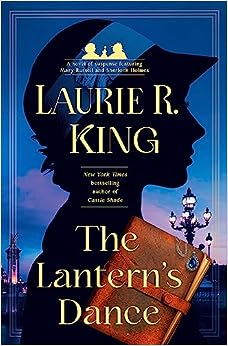 The Lantern's Dance (Mary Russell and Sherlock Holmes, #18) by
The Lantern's Dance (Mary Russell and Sherlock Holmes, #18) by 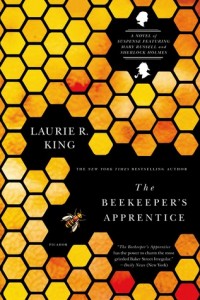 In the end, I did love this entry in the series, although it took me a bit to get there because of that slow start. But now that I’ve finished, I’m left with the impression that this is more of a family story than it is the kind of mystery that has more often been featured in this series, and in the Holmes canon and Russell Kanon in general. On this, the thirtieth anniversary of the publication of
In the end, I did love this entry in the series, although it took me a bit to get there because of that slow start. But now that I’ve finished, I’m left with the impression that this is more of a family story than it is the kind of mystery that has more often been featured in this series, and in the Holmes canon and Russell Kanon in general. On this, the thirtieth anniversary of the publication of  The Kamogawa Food Detectives (The Kamogawa Food Detectives, #1) by
The Kamogawa Food Detectives (The Kamogawa Food Detectives, #1) by  Speaking of magic, however, if the taste of The Kamogawa Food Detectives is as appealing to you as it was to me, if you would like to try something similar with a more overt hint of magic (I say more overt because it could easily be claimed that what these food detectives do IS magic) you might want to try
Speaking of magic, however, if the taste of The Kamogawa Food Detectives is as appealing to you as it was to me, if you would like to try something similar with a more overt hint of magic (I say more overt because it could easily be claimed that what these food detectives do IS magic) you might want to try 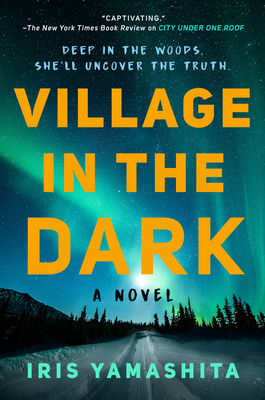 Village in the Dark (Cara Kennedy, #2) by
Village in the Dark (Cara Kennedy, #2) by  Escape Rating B: Part of what made
Escape Rating B: Part of what made 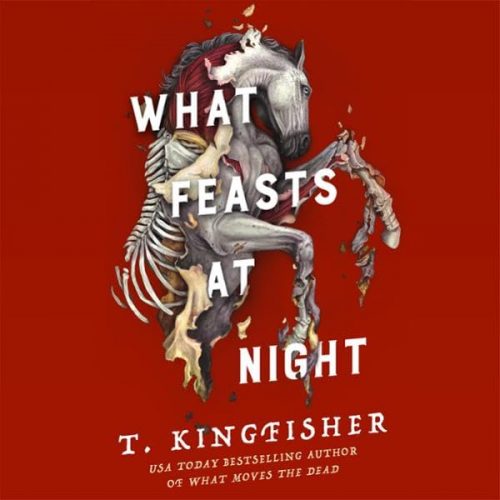 What Feasts at Night (Sworn Soldier, #2) by
What Feasts at Night (Sworn Soldier, #2) by 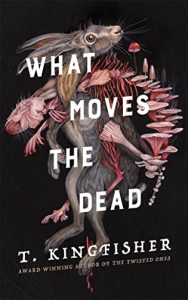 Escape Rating A-: I’m not sure whether to say that What Feasts at Night isn’t quite as creepy as
Escape Rating A-: I’m not sure whether to say that What Feasts at Night isn’t quite as creepy as 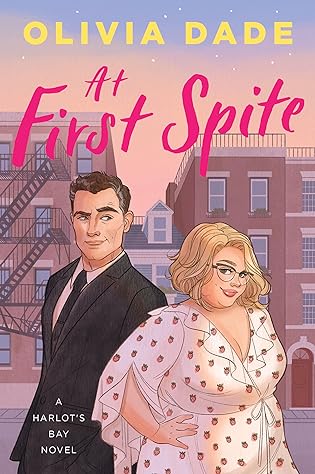 At First Spite (Harlot's Bay #1) by
At First Spite (Harlot's Bay #1) by  Escape Rating A-: It’s clear early in At First Spite that the narrow confines of Spite House aren’t nearly wide enough to handle ALL of the emotional baggage that Athena, Johnny, and Matthew have deposited there, in spite of Athena being the only person actually living within its walls.
Escape Rating A-: It’s clear early in At First Spite that the narrow confines of Spite House aren’t nearly wide enough to handle ALL of the emotional baggage that Athena, Johnny, and Matthew have deposited there, in spite of Athena being the only person actually living within its walls. The Bezzle (Martin Hench #2) by
The Bezzle (Martin Hench #2) by 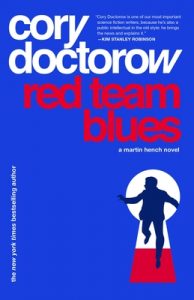 Escape Rating A: The Bezzle is a LOT of things, all of which are fascinating and make for a compelling read, but absolutely none of which are remotely science fiction, whether it is marketed as such or not. And not that SF readers won’t enjoy The Bezzle, because they certainly will and I absolutely did.
Escape Rating A: The Bezzle is a LOT of things, all of which are fascinating and make for a compelling read, but absolutely none of which are remotely science fiction, whether it is marketed as such or not. And not that SF readers won’t enjoy The Bezzle, because they certainly will and I absolutely did.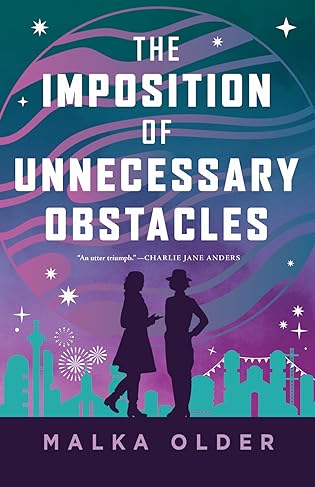 The Imposition of Unnecessary Obstacles (Mossa & Pleiti, #2) by
The Imposition of Unnecessary Obstacles (Mossa & Pleiti, #2) by 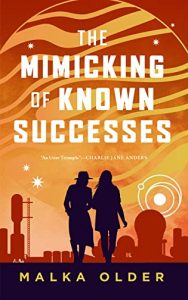 Escape Rating A+: There’s something supremely comforting about this series – and I’m oh-so-happy it IS a series because
Escape Rating A+: There’s something supremely comforting about this series – and I’m oh-so-happy it IS a series because 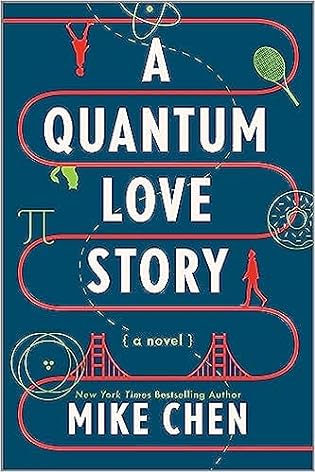 A Quantum Love Story by
A Quantum Love Story by  Escape Rating B+: If the blurb or the description above are making you think of the movie
Escape Rating B+: If the blurb or the description above are making you think of the movie 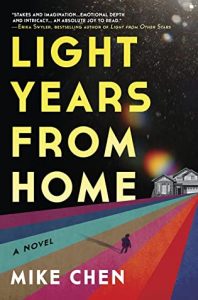 But the chasing down of just how many different time loop stories this one brought to mind kept me from being as invested in Carter and Mariana’s problem solving through their loops, although the emotional journey they took did hold my interest even as it briefly looked like it was heading for
But the chasing down of just how many different time loop stories this one brought to mind kept me from being as invested in Carter and Mariana’s problem solving through their loops, although the emotional journey they took did hold my interest even as it briefly looked like it was heading for